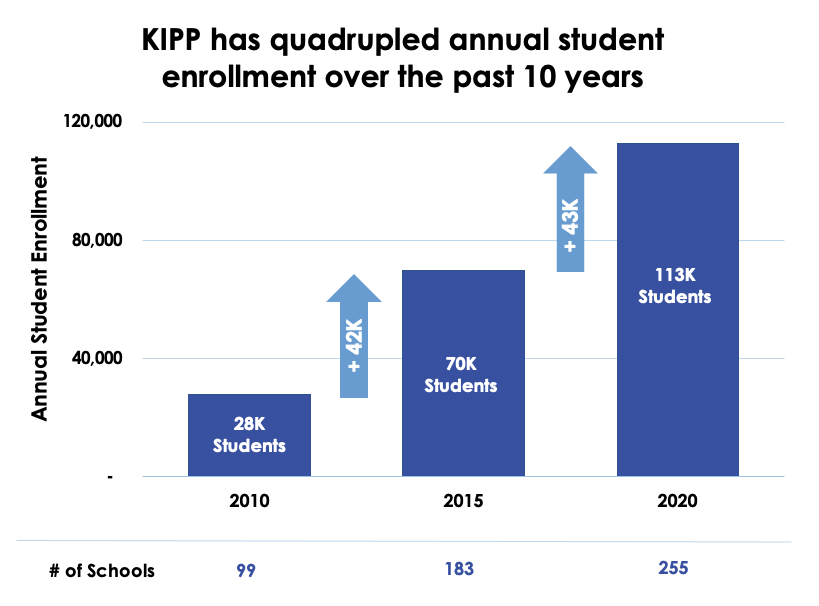What it is
Together with families and communities, KIPP creates joyful, academically excellent preK-12 schools that prepare students with the skills and confidence to pursue the paths they choose—college, career, and beyond.
KIPP schools are tuition free, public schools open to all students, and KIPP is committed to serving children facing economic insecurity. 88% of KIPP students are eligible for federal free or reduced price lunch.
KIPP schools are rooted in high expectations for all students, a focus on character (e.g., grit, perseverance), highly effective teachers and leaders, and a safe, structured, and nurturing school environment. KIPP also supports its students into and through college, strengthening college match, enrollment, persistence, and graduation.
The problem it addresses
A great education can give students a life full of choice and opportunity, but too many children today lack access to such a learning experience. In 2019, only ~35% of students in 4th and 8th grades were proficient in reading and only 41% of 4th graders and 34% of 8th graders were proficient in math. Of those students who graduated high school and went on to attend four-year colleges, only 6 in 10 completed their programs within six years.
Due to a discrepancy of resources and access, affluent white students experience stronger academic results than students of color from economically disadvantaged communities. Relative to their white or higher-income peers, these students are less likely to have effective, well-supported teachers and receive high-quality curricula, and they earn bachelor’s degrees at dramatically lower rates; only 16% of young adults from families in the lowest income quartile earn a bachelor’s degree by age 24, compared to 62% for families in the highest income quartile.
Why we believe in it
KIPP’s evidence base demonstrates impressive outcomes for students throughout their educational journey:
- Third-party evaluations show that students who attend KIPP schools achieve meaningful gains in literacy and math relative to a control after just 2-3 years. Randomized controlled trials (RCTs) of KIPP elementary and middle schools found effect sizes of 0.14-0.32 in literacy and 0.18-0.41 in math; and a quasi-experimental design study of KIPP high schools found an effect size of 0.18 in literacy and 0.27 in math (please see this study for more information on interpreting effect sizes in education).
- A 2019 RCT studying the long-term impacts of KIPP middle schools on college enrollment and early college persistence found that the impact of attending a KIPP school would be almost large enough to erase the nationwide racial disparity in college enrollment rates. And KIPP’s four-year college completion rate is 3x the national average for low-income students.
As public schools, KIPP schools are sustained through a combination of federal, state, and philanthropic funding.
Progress to date
With 255 schools reaching over 110,000 students, KIPP is by far the largest network of public charter schools in the country. KIPP has demonstrated impressive growth over the past 10 years, up from 99 schools serving 28,000 students in 2010, and is poised for continued growth.

